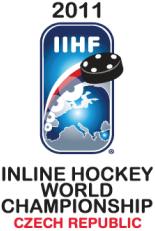PARDUBICE – The participating nations of the 2011 IIHF InLine Hockey World Championship met to approve rule changes and discuss about the event allocations for the next two years.
Next year’s organizer from Ingolstadt, Germany, held a presentation in Pardubice to the delegates of the 16 nations participating in the event.
The Bavarian city successfully hosted the event in 2009, drawing high attendance figures in its atmospheric 4,800-seat Saturn Arena, home of DEL club ERC Ingolstadt. The facility also features a practice arena that will be used as the second venue.
The 2012 IIHF InLine Hockey World Championship is set to be staged 1-7 June 2012.
The InLine Hockey Worlds could even be hosted in Germany for two years in a row as Dresden applied to host the 2013 event in its EnergieVerbund Arena that was used for the 2011 IIHF World U18 Championship recently. No other application has been received yet for 2013.
New Qualification FormatThe IIHF also reviewed its qualification system for the 16-team event, of which 14 nations will be set after this year’s event and two more teams will be determined through qualification events.
Until now four regional qualifications (Africa, Americas, Asia/Oceania, Europe) have been staged bi-annualy, meaning two out of four regions per year.
In future the IIHF plans to hold two qualification tournaments per year that will be open to candidates from all regions and that will be separated by geographical criteria. With this measure nations that get relegated or do not qualify for the World Championship will be able to compete internationally each year rather than every two years.
The format and participants will be announced in the upcoming weeks.
Rule ChangesThe delegates also discussed proposals for rule changes.
Changes that are already in place since 2011:
- At face-offs, the player of the attacking team in his attacking half of the rink shall place his stick on the surface first. When the face-off is at the centre face-off spot, the player of the visiting team shall place his stick on the surface first.
- Players need to keep the puck in motion in their defensive zone towards the opposing goal unless they are prevented from doing so by an opposing player or they are playing short-handed. A warning will be issued for the first infraction and a minor penalty for the second.
- Additionally, players are allowed to carry the puck behind their own goal no more than one time. The puck can be stopped behind the net for no longer than three seconds. A warning will be issued for the first infraction and a minor penalty for the second.
- The game-winning shot procedure (“shoot-out”) will begin with three different shooters per team instead of five. If the score is still tied after three shots by each team, the procedure continues with a tie-break shoot-out by one player of each team.
- Inline skates of up to four wheels must be designed for inline hockey and be approved by the IIHF. The use of speed skates, quad skates or any skates so designed that it may cause injury is prohibited.
- As inline hockey is played exclusively with a puck nowadays, the ball as an alternative has been eliminated from the rules.
Changes as of next season:
- The clock counts down in the future same as in ice hockey.
- Rink dimensions, design, measurements and rules on equipment (except skates) will be adapted to the ice hockey rule book, although without the blue lines, and face-off circles and spots only in the centre and the end zones as until now.







